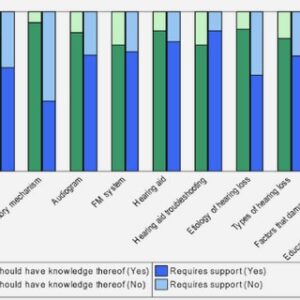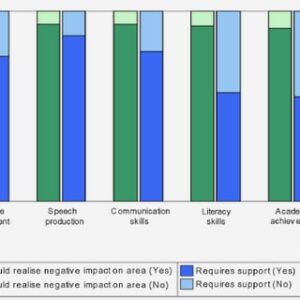(Downloads - 0)
For more info about our services contact : help@bestpfe.com
Table of contents
1 On the use of genetic algorithms in engineering applications
1.1 Introduction
1.1.1 Literature overview
1.1.2 Genetic Algorithms (GAs): a brief description
1.1.3 The standard GA
1.1.4 The schemata within GAs
1.2 Genetic Algorithms: mathematical foundations
1.2.1 Effect of the selection operator on schemata
1.2.2 Effect of the crossover operator on schemata
1.2.3 Effect of the mutation operator on schemata
1.2.4 The theorem of schemata and the Implicit Parallelism
1.2.5 Advantages and drawbacks of GAs
1.3 The genetic code BIANCA
1.3.1 The Non-Linear Programming Problem (NLPP)
1.3.2 The architecture of BIANCA
1.4 Representation of individuals and species within BIANCA
1.4.1 The new structure of the individual’s genotype
1.4.2 Encoding/decoding of the optimisation variables
1.5 Evolution of individuals and species in BIANCA
1.5.1 The new crossover phase
1.5.2 The new mutation phase
1.6 Handling constraints in BIANCA
1.6.1 Literature overview on constraints-handling techniques
1.6.2 The Automatic Dynamic Penalisation (ADP) strategy
1.7 Some benchmark problems to test the ADP strategy
1.7.1 The welded beam problem
1.7.2 The pressure vessel problem
1.7.3 The tension-compression spring problem
1.7.4 Discussion of results
1.8 The interface of BIANCA with external software
1.9 The Graphical User Interface (GUI) of BIANCA
2 Identification of constitutive properties of piezoelectric structures
2.1 Introduction
2.1.1 Literature overview
2.2 Constitutive law for piezoelectric materials
2.2.1 Piezoelectric materials
2.2.2 General constitutive equations
2.3 Identification of electromechanical properties
2.3.1 Problem description
2.3.2 Mathematical statement of the problem and solving strategy
2.3.3 Finite element model of the active plate
2.4 Numerical results
2.4.1 Phase I: closed-circuit conditions
2.4.2 Phase II: open circuit conditions
2.4.3 Effect of the noise on the identified properties
2.5 Concluding remarks
3 Optimal design of elastic properties of laminates
3.1 Introduction
3.2 Polar representation of the plane anisotropy
3.2.1 Polar representation of second-order tensors
3.2.2 Polar representation of fourth-order tensors
3.2.3 Thermodynamic existence conditions
3.3 The polar formalism for the mechanics of laminates
3.3.1 The Classical Laminated Plate Theory (CLPT)
3.3.2 Polar expression of the laminate tensors
3.3.3 Existence and geometric bounds on laminate polar parameters
3.4 Design of elastic properties of laminates
3.4.1 Mathematical statement of the problem and numerical strategy
3.5 Studied cases
3.5.1 Sample problems
3.5.2 Numerical results
3.6 Concluding remarks
4 Optimal design of composite modular systems
4.1 Introduction
4.2 Description of the problem: application to the design of an aircraft wing .
4.3 The two-level optimisation strategy
4.4 Mathematical formulation of the first-level problem
4.4.1 Geometrical design variables
4.4.2 Mechanical design variables
4.4.3 Mathematical statement of the problem
4.5 Mathematical formulation of the second-level problem
4.6 Finite element model of the structure
4.7 Studied cases and results
4.7.1 Case 1: identical stiffeners
4.7.2 Case 2: non-identical stiffeners
4.7.3 Case 3: non-identical stiffeners, symmetric distribution
4.7.4 Verification of the optimal stacking sequences
4.7.5 Some remarks on the type of laminate stacking sequence
4.8 Concluding remarks
5 Optimal design of hybrid elastomer/composite laminates
5.1 Introduction
5.2 Description of the problem
5.2.1 Geometry and materials
5.2.2 Loading conditions
5.2.3 Finite element model of the hybrid plate
5.3 Mathematical formulation of the problem
5.3.1 Mathematical statement of the problem and solving strategy .
5.4 Studied cases and results
5.4.1 Case 1: fixed number of plies
5.4.2 Case 2: variable number of plies, symmetric stack
5.4.3 Case 3: variable number of plies, non-symmetric stack
5.4.4 Discussion of results
5.5 Concluding remarks
6 Optimal design of hybrid elastomer/composite modular systems
6.1 Introduction
6.2 Design of hybrid elastomer/composite structures
6.2.1 Description of the problem
6.2.2 The two-level optimisation strategy
6.3 Mathematical formulation of the first-level problem
6.3.1 Geometrical design variables
6.3.2 Mechanical design variables
6.3.3 Mathematical statement of the problem
6.4 Mathematical formulation of the second-level problem
6.5 Finite element model of the hybrid structure
6.6 Studied cases and results
6.6.1 Case 1: clamped quasi-homogeneous orthotropic plate
6.6.2 Case 2: simply supported quasi-homogeneous orthotropic plate
6.6.3 Case 3: general case
6.6.4 Discussion of results
6.7 Concluding remarks
Bibliography



